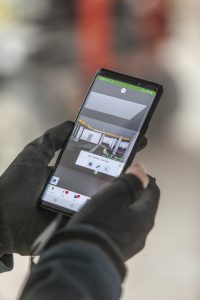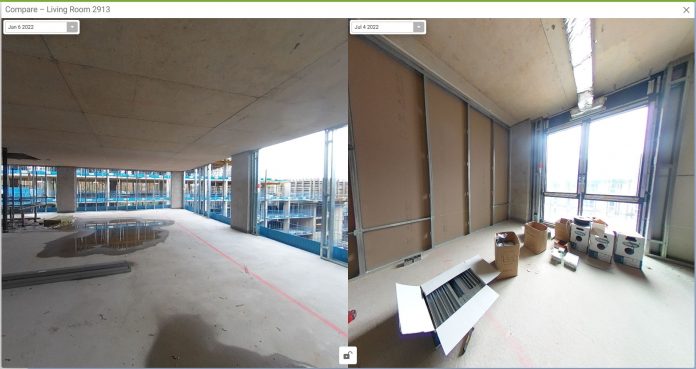Nick Leach, head of digital construction at Sir Robert McAlpine, and senior digital construction manager Mark Harrison look at the role of digital tools in the development of Hockley Mills in the heart of Birmingham
Located at 33 Pittsford Street in the heart of Birmingham’s Jewellery Quarter, Hockley Mills is a major build-to-rent development funded by Legal & General and being built by Sir Robert McAlpine. To be known as Goodsyard when completed next year, the mixed-use project will provide 395 one-, two- and three-bedroom apartments, a new entrance to the Quarter’s station, 116 parking spaces and 28,000 sq ft of commercial space that could be used for retail, leisure or office purposes.
This is a significant project for the local area, not only in its revitalisation of the historic industrial space but also for the forward-thinking digital tools being deployed by its project teams. Underpinned by a business philosophy that every team member should have access to the right tools and data, Sir Robert McAlpine has embraced digital construction methods to improve efficiency, productivity and project delivery. In the site office at Hockley Mills, for example, there are interactive screens where team members can access dashboards containing project data and visuals.
Here, we hone in on some of the particular digital tools in use at Hockley Mills.
Digital tools: Drone surveys
Traditionally, if you are seeking to investigate project details at any elevation, expensive and time-consuming scaffolding is required, alongside the human risk of a team member needing to climb this scaffold.
Hockley Mills recently required a check on completion of a roof elevation and used the incomparably cheaper, faster and safer method of a drone survey. Site space is saved from the bulk of either scaffold or cherry picker, and the extra data that comes alongside the drone’s images and recordings (time, date, elevation etc) is only beneficial to recordkeeping.
Drone flights can also be conducted around the site on a regular basis for progress capture and recording. For example, they are being used by ground workers on other Sir Robert McAlpine projects to monitor the earth cut and fill exercise.
Digital tools: 360° photo capture monitoring
At key milestones on the Hockley Mills project (and on a more regular basis too), project members go around site, position themselves in the relevant section of a site drawing hosted on Dalux on a tablet, and utilise Ricoh 360 cameras to record 360° images which are uploaded to the Dalux platform (alongside data such as photographer and time). This is performed across the full site.
Most obviously, this practice allows offsite team members visual access to the project build and visuals without the margin for human error extant in traditional photography. The value of the process certainly doesn’t end there either – for example, the Dalux platform allows team members to monitor progress and make direct comparisons between recent and past images and with the 3D model, all within the single platform. Using this 3D model on Dalux, team members are also able to take measurements and click on elements of the model to pull up technical data.
Capturing the full lifecycle of a project in this way can also have commercial benefits too, in the case of any disputes arising.
Where next for digital construction?
The increased data collection and efficiency enabled by digital construction is hugely beneficial for current priorities in the built environment, such as sustainability and health and safety. However, leadership has proven and will continue to prove essential to rolling out the necessary wider engagement with these technologies for them to become industry standard.
In any project team, there will be varying degrees of technological literacy, underpinning the importance of never utilising tech for tech’s sake, but we do need more clients informed, able and willing to engage with these practices. As contractors, we have a certain responsibility to educate those who are green to these methods, because with each new client or team member building confidence in a digital tool, our sector is one step further to where digital construction methods are best benefitting our operations.
Nick Leach
Head of digital construction
Mark Harrison
Senior digital construction manager
Sir Robert McAlpine
+44 (0) 333 566 3444








![[VIDEO] Making DorTrak reports easy to read with Fireco Inspecting fire doors at Fireco, firedoor technology, 2023](https://www.pbctoday.co.uk/news/wp-content/uploads/2024/04/JPZ_2364-web-218x150.jpg)
![[VIDEO] Re-flow Field Management review by Traffic Management Installations When TMI began subcontracting for councils and government bodies, they wanted to present their site reporting in a more professional manner](https://www.pbctoday.co.uk/news/wp-content/uploads/2025/03/TMI-Media-1-218x150.png)




